Travel Notes on Suzhou Water Town
It seems that I have been waiting for a long, long time, for my attachment to the people with small bridges and flowing water, and I seek my thoughts in a confusion. The sky was so clear and blue, and the clouds had no time to linger. On an afternoon full of sunshine, I walked into the water-town world that surrounded my soul and dreams-Tongli and Zhouzhuang in Suzhou.




Tongli is located in the northeast of Wujiang City, Jiangsu Province, 18 kilometers away from the urban area of Suzhou. The transportation is very convenient. Except for the shuttle bus that runs directly to Tongli in the North Square of Suzhou Railway Station, the most convenient one is to take Metro Line 4 from Suzhou Railway Station to Tongli (about 45 minutes), and then transfer to Bus 725 (20 minutes) to Tongli.




Tongli is an ancient town with a history and typical water town style. It has a history of more than a thousand years since its establishment in the Song Dynasty. There are hundreds of gardens, temples, mansions and former residences of famous people built in the Ming and Qing dynasties in the town. 15 small rivers in the shape of a "Sichuan" divide them into seven small islands, and 49 ancient bridges connect them. It is famous for its "small bridges, flowing water, and people's homes."





There are many inns in Tongli Ancient Town. The inn I stayed in this time, Yuqingge Garden Hotel is very good. The rooms are small but the gardens are beautiful








Tongli Tourist Routes: Tuisi Garden--Lizze Nvxue--Wang Shaoao Memorial Hall--Geng Le Hall--Jiayin Hall--Chongben Hall--Taihu Water Conservancy Exhibition Hall--Songshi Wu Garden--Pearl Tower Jingyuan--Chen Qubing's Former Residence-Ming and Qing Street.

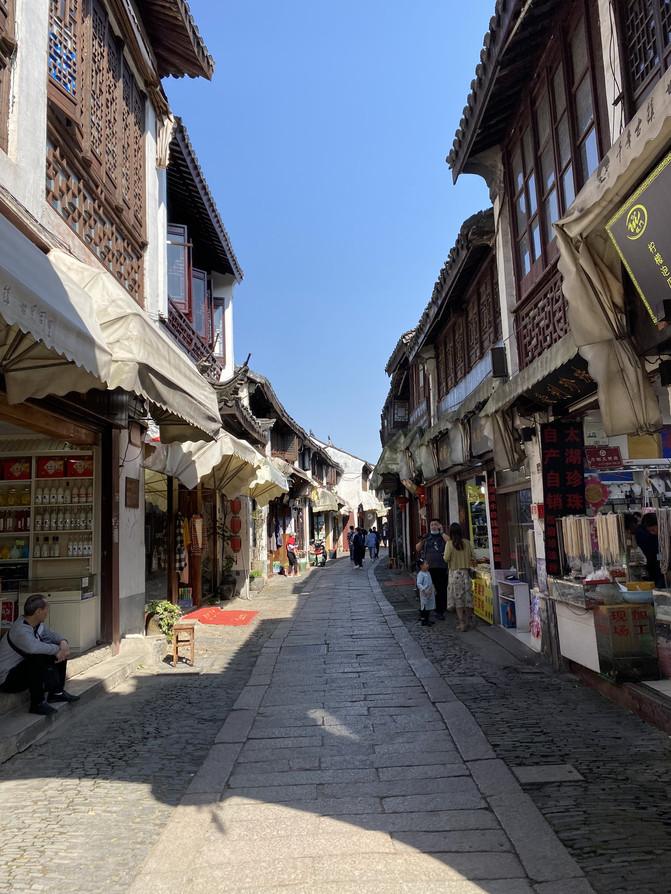




Tuisi Garden is the most famous mansion in Tongli and one of the famous gardens in Jiangnan of China.


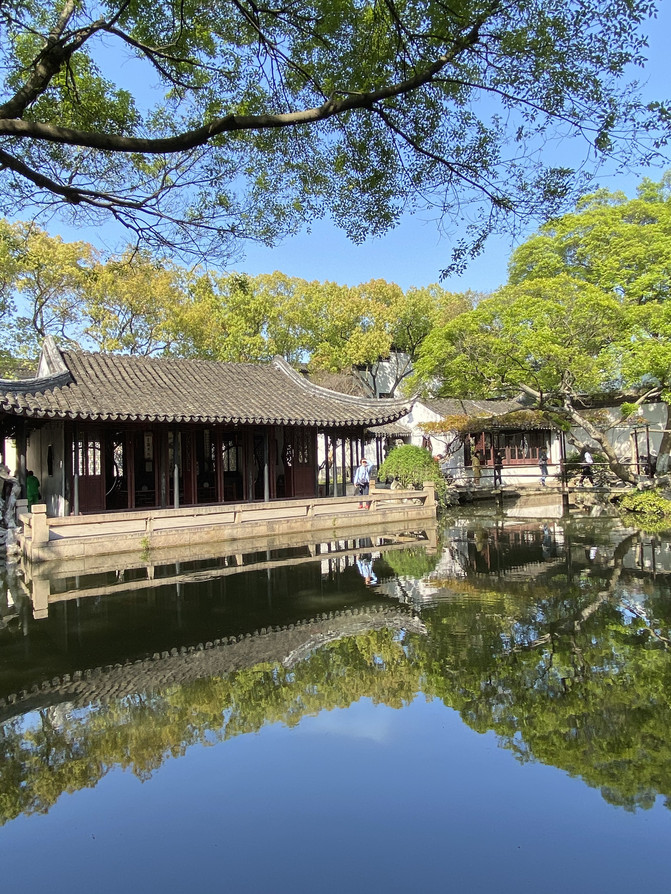
Tuisi Garden was built in the 11th to 13th years of Guangxu of the Qing Dynasty (1885-1887 AD). Lan Sheng, the director of the park, built the house he was dismissed from his post after being impeached. The name of the park is "Tuisi", which is taken from Zuo Zhuan. It is simple but has profound meaning.



Compared with the four famous gardens in Suzhou, Tuisi Garden is a small garden. Although it only covers an area of nine acres and eight cents, it was meticulously conceived and unique in layout. It took two years to build the park. The whole garden is centered on the pool, and the buildings are like floating on the water. The architectural pattern has also broken through the convention, changing the vertical to horizontal, from west to east, with houses in the west, courtyards in the middle, and gardens in the east. The essence of the building is concentrated in the garden, which has the architectural style of Jiangnan gardens in the late Qing Dynasty.




On the west side, there are three entrances to a sedan hall, a tea hall, and a main hall, which are used for weddings, funerals, weddings and receptions.




In the inner house on the east side, there are two "Wanxiang Towers" in the north and south, each with five floors and five bottoms. The buildings are connected by a double corridor between the east and west. They are commonly known as the "Zouma Tower" and are the crown of Jiangnan.





The garden view part is also divided into east and west sides, with the west courtyard and the east garden. The courtyard is the order of the garden, with drought navigation in the middle, sitting in the spring and watching the moon building, and living in the cold of the year. The park is centered on water and has a special case of the Tishui Garden. Mountains, pavilions, halls, corridors, pavilions, pavilions and boats are all close to the water. The park is like water above the water, and it can be said to be unique in the south of the Yangtze River. It is also a unique place in the architectural beauty of the sea, land and air.




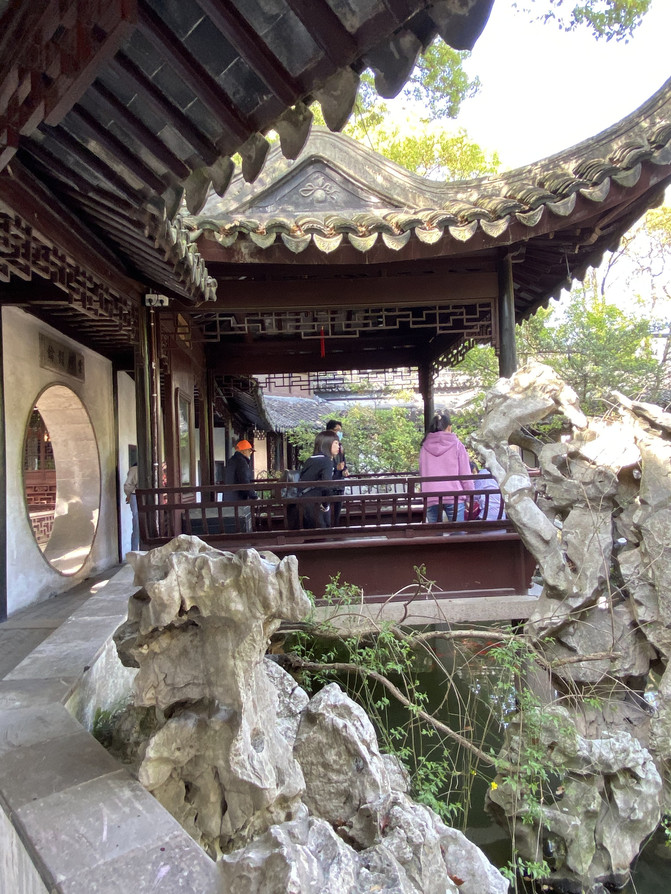




Each building in Tuisi Garden can be independently constructed, but also can be opposite to each other and echo each other.



There are a lot of Taihu rocks in Tuisi Garden. Even if a tree is planted in the small courtyard, it must be dotted with Taihu rocks.




Lize Women's School was founded in the 32nd year of Guangxu (1906 AD) by Ren Chuanxi, the second-generation owner of Tuisi Garden, setting the precedent for women's education in Wujiang.

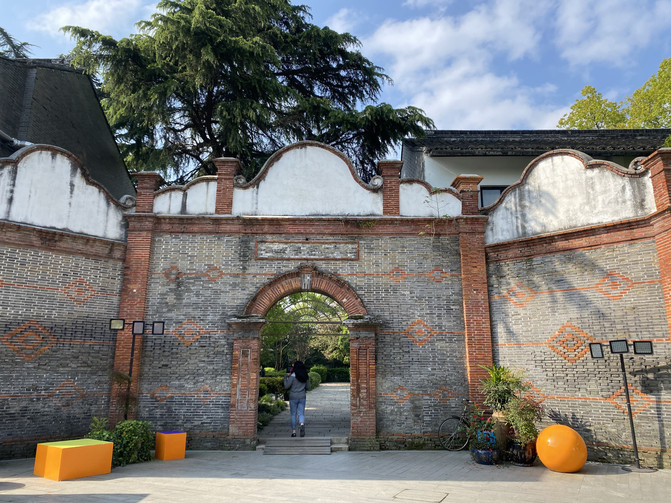





The theme of the Wang Shaoao Memorial Hall is to promote the spirit of Wang Shaoao, one of the main founders of the China Association for the Promotion of Democracy, a famous social activist and an outstanding representative of Tongli. It takes Wang Shaoao's revolutionary and fighting life as the main line, and displays Wang Shaoao's extraordinary life through physical objects, paintings, pictures and other means.



Geng Le Hall was built by Zhu Xiang, a scholar of the Ming Dynasty. The traditional layout of the front house and the back garden. The front house consists of a foyer, a main hall, and a hall building. The back garden consists of a lotus pond, a three-bend bridge, a three-bend pavilion, a curved corridor, a mandarin duck hall, a Yanyi building, a Gusongxuan, a Huanxiu Pavilion and a Moxiang Pavilion. There is also a west wall gate in the west of the garden, which leads to the suburbs. It is a typical mansion of the Ming and Qing Dynasties. When it was first built, there were 52 rooms in total, which were developed and abandoned in subsequent dynasties and were no longer the original system. There are 41 rooms in three rooms, including buildings, gardens, halls, buildings and pavilions.














Jiayintang is the place where the famous patriotic poet Mr. Liu Yazi lived in his early years. It was formerly called Liu Zhai. The owner, Liu Bingnan, is a relative of Liu Yazi. After making a fortune in running the oil shop, he moved to Tongli. He spent 20,000 taels of silver to build Jiayin Hall in 1922. Every building in the hall has very fine carvings, which has certain artistic value. The main hall is tall and spacious, with a bit of a rear door style.







The attraction of Chongben Hall lies in its carving. The entire building complex has five courtyards in depth along the central axis, consisting of a foyer, main hall, front building, back building, kitchen, etc. There are more than 100 wood carvings from the main hall to the inner house, with different contents. The pictures are concise and lively, the composition is lively, and the knife skills are skillful.




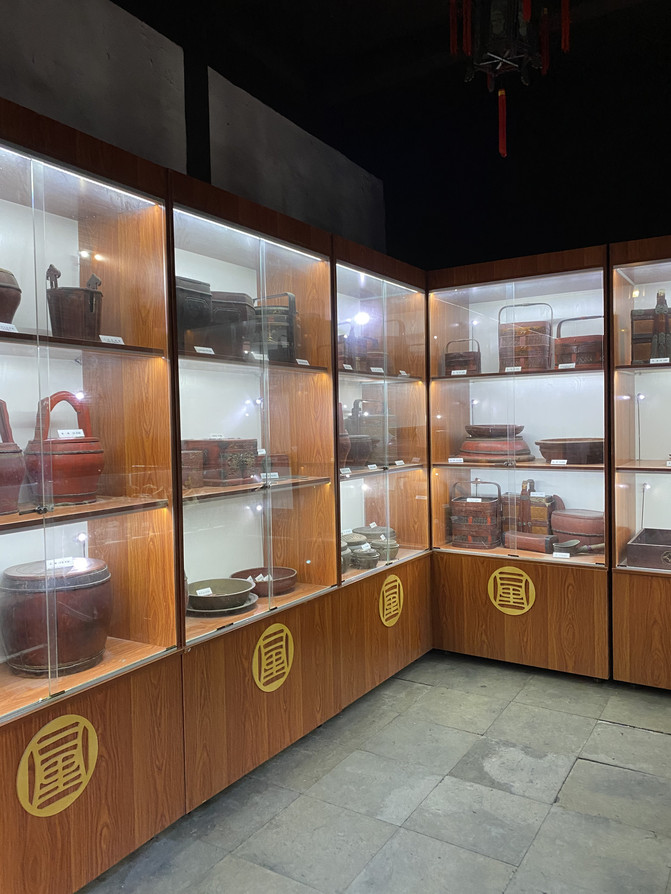


In the small courtyard stacked with lake stone flower stands, Tianzhu and red maples complement each other.

Taihu Water Conservancy Exhibition Hall is located at the former site of Taihu Water Conservancy Tongzhi Office, which was rebuilt from the official property of Chen Yizhen, a scholar during the Kangxi period. The former site of Taihu Water Conservancy Tongzhi Office is the remains of few existing water control institutions in China. It has important empirical value for studying the development history of Taihu Water Conservancy and Industrial Government Offices.






Brick Carving of Taihu Water Conservancy Tongzhi Administration

Songshiwu Garden displays more than 1,200 pieces of fine pine screen stone paintings. It is a collection collected by Mr. Zhang Jiaxin, former director of the Design Department of the Engineering Corporation of the Ministry of Railways, and his wife, Ms. Wang Yuejun, for more than 30 years (now presented to the Tongli Government). Songshiwu Garden is an exhibition hall built by the Tongli Town Government to permanently preserve this precious natural and cultural heritage.







Pearl Pagoda Jingyuan was the residence of Chen Wangdao, the censor of Henan Road in Nanjing during the Jiajing period of the Ming Dynasty. Covering an area of 18,000 square meters, it is divided into three major parts: east, west and north. The east includes archway and residential buildings. There are two houses and five entrances. There are prepared alleys in the middle, separating them into two houses. On the east, there are tea halls, Honglue Hall, Lanyun Hall, and Tanglou. On the west, there are Yimen, Yulan Hall, Wenxiang Reading Building, etc. The west is a garden, consisting of Ruguzhai, Biyun Shanfang, Qingyuan Hall, Lvqiu Pavilion, Ziwei Pavilion, Jingmingxuan Pavilion, Xiaolanting, Fucui, Xiqing, Beishan Shenzi, Pond, Ancient Stage, and Zhiyin Zhai. The north is the ancestral temple.




Honglue Hall is the hall of the Chen Mansion. It is the place where the owner receives distinguished guests or holds wedding and funeral celebrations.




Yunlan Hall is the main place where the story of Pearl Tower takes place. At that time, Fang Qing's family was in decline, so he came to join his aunt. Because feudal society valued the lintel, Fang Qing came to the Chen residence with pleasantries. It was the birthday of her uncle. Her aunt thought he was ashamed and led Fang Qing from the front hall of the inner house to humiliate her. This is the famous story of "Fang Qing Seeing Aunt".

In the middle of the downstairs is the living area of the host couple, the east side is the bedroom of the host couple, and the west side is the bedroom of the wife and maid. Climbing eighteen stairs is Miss Chen Cui'e's embroidery pavilion. The room is equipped with painting tables, bookshelves, embroidery tables, chess tables, piano tables, Xiangfei couch, etc.



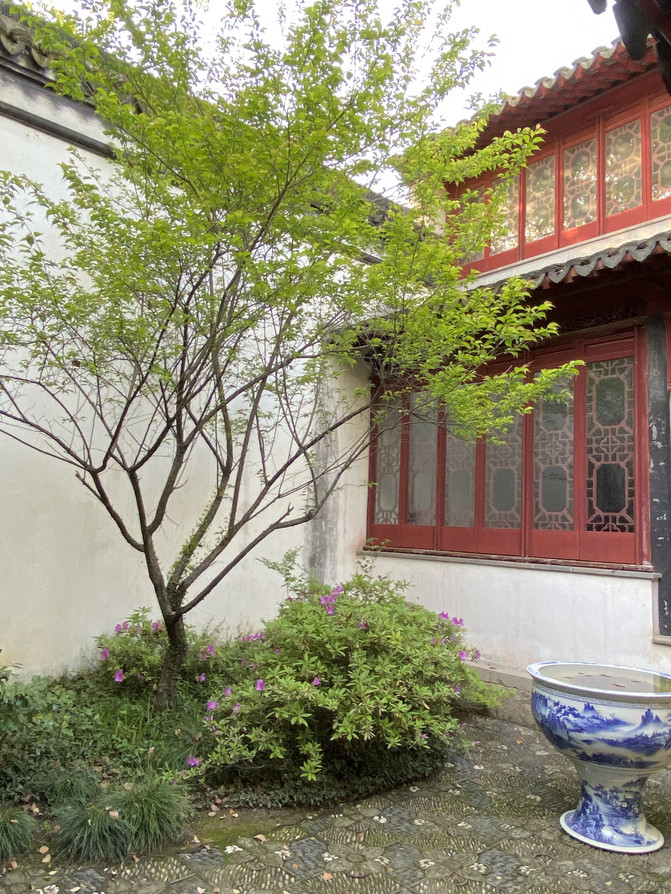

The house is separated from the garden by a river.


The back garden has Qingyuan Hall as the core and is built by water. The small building in the garden is called "Gugu Zhai". The small building is exquisite and unique, with corridors all around it. You can lean on the railing and look around. The reflection in the garden is picturesque and the scenery is beautiful, and you can see a panoramic view of the pavilions, pavilions, flowers, trees and trees





covered bridge



Chen Qubing's former residence is a simple and ordinary Qing Dynasty residence. Chen Qubing (1874-1933) was a modern poet and one of the founders of Nanshe. In his early years, he participated in the Alliance, followed Dr. Sun Yat-sen, and spared no effort to publicize the revolution. He made important contributions to the Revolution of 1911 that overthrew the Manchu Empire and the Dharma Protection Movement against Yuan Shikai. In 1923, he served as a professor of the Chinese Department of National Southeast University (changed to Central University in 1928 and Nanjing University in 1949). After 1928, he served as director of the Jiangsu Revolutionary Museum and chairman of the Jiangsu Branch of the Antiquities Preservation Committee of the University College. In 1933, he died of illness in his hometown Tongli Town.






Ming and Qing Street is more than 160 meters long and is in the architectural style of the Ming and Qing Dynasties. It relatively completely retains the unique pattern of going to and down streets in Jiangnan, with the two streets parallel. Ming and Qing Street can enjoy the prosperous ancient town and commercial market. The street is paved with stone floors, and shops on both sides are adjacent. There are many antique shops, embroidery crafts, silk shops, traditional cuisine on the street, and many specialties: chicken head rice, lard rice cakes, sauce hoof, etc.

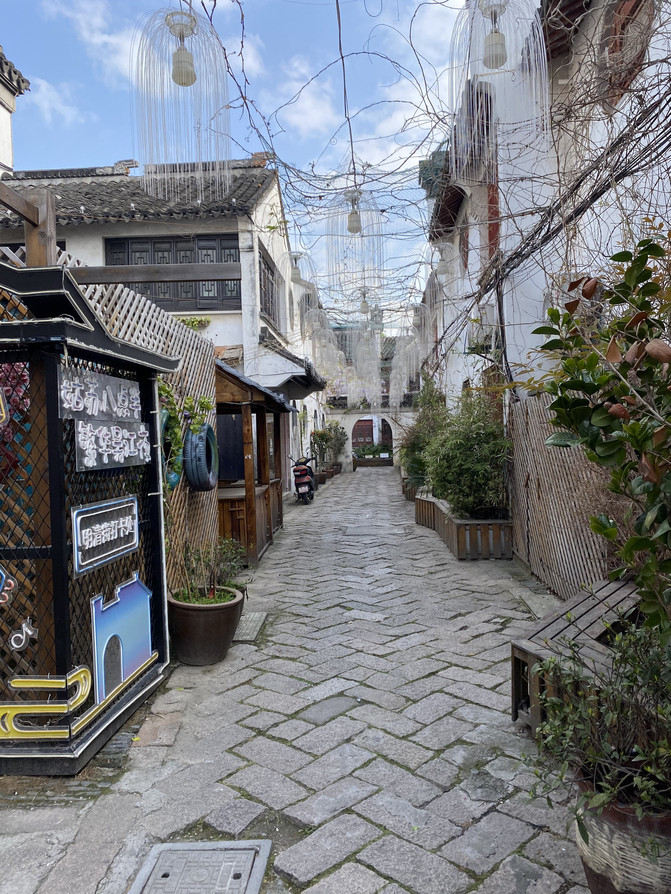






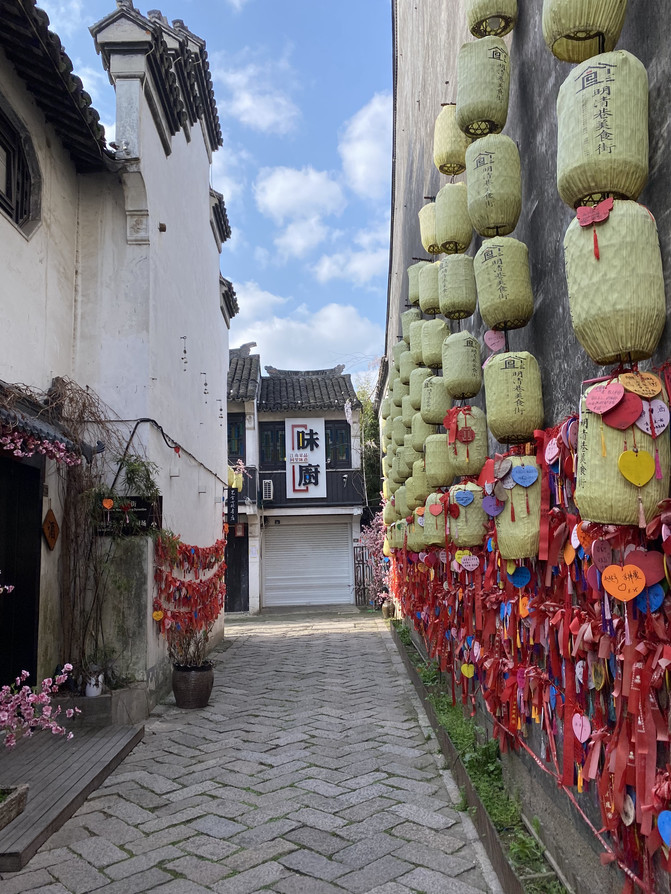

Tongli is surrounded by five lakes. The streets and alleys in the town are winding and rivers are crisscrossed, leaving behind many ancient bridges built in various eras.



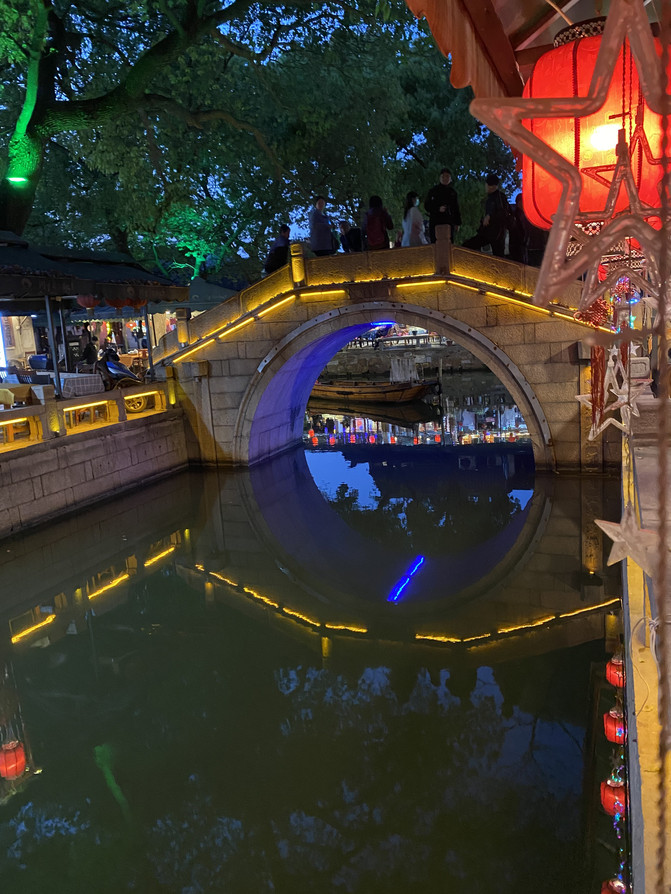


The three most representative bridges are Taiping Bridge, Jili Bridge and Changqing Bridge. The three bridges are small and exquisite, and elegant in construction. Because they span the river in the shape of "pin", they are also known as "one product in the bridge". "Walking three bridges", also known as "walking the road to safety" and "walking all diseases", expresses people's hope for health and safety.


Taiping Bridge is a stone bridge that spans the Dongliu and Qizi Wei. The bridge is of beam type, small and exquisite, with a link on the bridge, which is: "Yongnan North Taiping Road, completed 23 years after Jiaqing.


Jili Bridge spans Qizi and Liangwei, and is located between Taiping Bridge and Changqing Bridge. The bridge type is an arched bridge with bridges on both north and south sides.


Changqing Bridge, commonly known as Xiejia Bridge, spans Dongliu and Liangwei. It was formerly named Fujian Bridge, also known as Guangli Bridge. There is a bridge bridge on the bridge, which shows that the bridge builders are united and united in building the bridge for the people. Their achievements are in the present era and will benefit the future.



Every family in Tongli Town is close to the water, and every household is connected to a boat; there are rows of houses in the Ming and Qing Dynasties; bridges in the Song, Yuan, and Qing Dynasties are well preserved; bridges with spirit are simple and simple, and neatly paved stone roads can be seen everywhere. The poetic charm of the ancient town in Jiangnan can be seen everywhere.


As night falls, you jump out of the B & B and walk into the street. The lanterns along the street are flashing, the boats are rippling slightly in the silver light, and the shops on both sides are coming in and out. Tongli under the night is particularly charming.
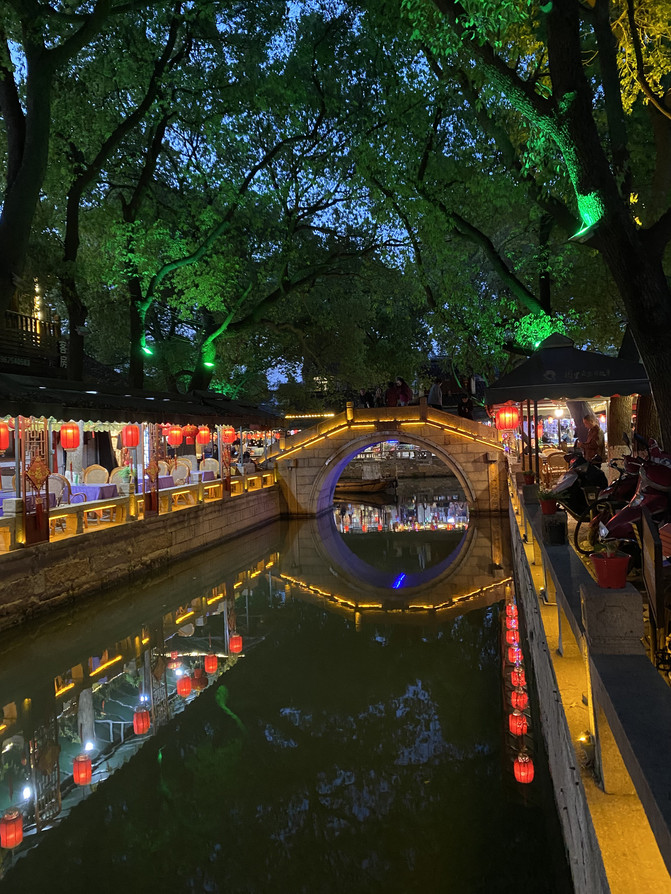





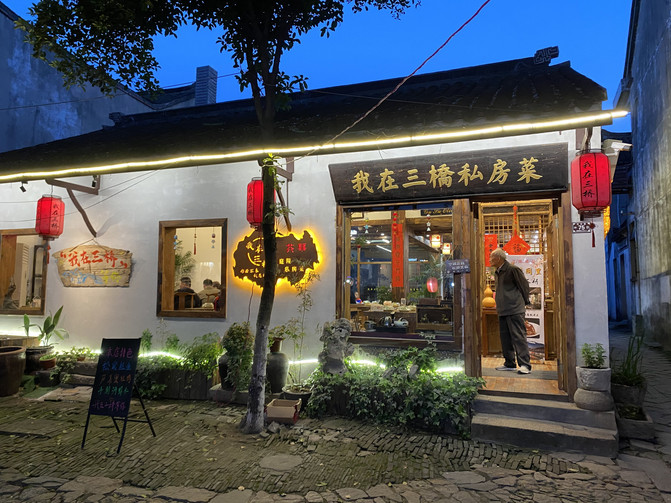












Zhouzhuang and Tongli Ancient Town are only 15 kilometers away. Bus No. 758 from Tongli Bus Station can go directly to Zhouzhuang Jiangze Bus Station in 25 minutes and stay at Zhouzhuang Shuiyueju Inn overnight.






Zhouzhuang, a water town, stayed briefly fifteen years ago. It was a century-old village built of green bricks and ancient tiles. A small river meanders among the elegant ink paintings. Small boats shuttle through it, and the melodious singing of the boatman and the boatwoman floated. This scene lingered in my mind for a long time.





The ancient streets and alleys paved with bluestone slabs follow the vertical and horizontal waterways, winding and winding.

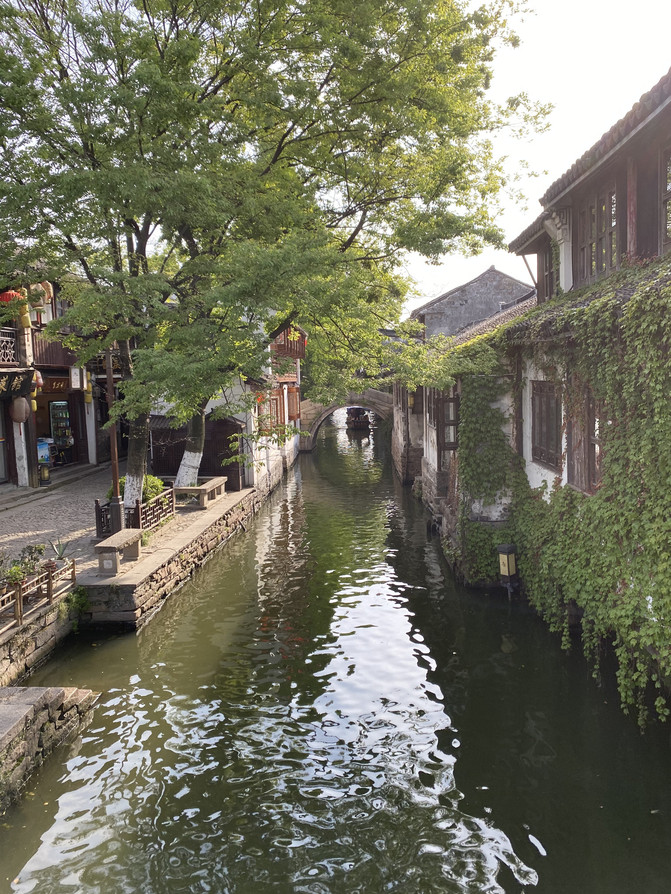



Pavilions, small bridges and flowing water are intertwined vertically and horizontally, creating an irresistible charm and an inexhaustible charm.





The bridge in Zhouzhuang is a unique one in Jiangnan. It carries history and also records culture. There are 14 ancient stone bridges built in the Yuan, Ming and Qing dynasties well preserved on the well-shaped river. Almost every bridge can tell famous allusions, setting off not only the scenic scenery of Zhouzhuang, but also the customs of the water town.









The bridges in Zhouzhuang are all shaped like stone arches with both sides facing upwards. Looking from a distance, they are like rainbows lying on the waves, but also like gazing at each other. There are upward steps at each end and the towering bridge back makes it easy to overlook the bridge top, see the beautiful figure of the boatwoman, listen to the low singing of Wu Nong and the sound of flowing water passing across the bridge deck.










The double bridges originated from the two stone bridges built together during the Wanli period of the Ming Dynasty on the crossing river. Because the bridge deck is horizontal and vertical, and the bridge hole is round and it looks like the key used by people to unlock locks in ancient times, so local people call it "Key Bridge".




The two bridges are each more than ten meters long and about three meters wide, and are built of granite. These two bridges are world-famous for the oil painting "Memories of Hometown" created by Chen Yifei, so they are also must-see places for tourists to Zhouzhuang.





Fu 'an Bridge is very well-known. This round arch bridge is famous for its beautiful shape. Located at the east end of Zhongshi Street, it spans the Nanbei River and leads to Nanbei Street. It is said that there is a Zongguan Temple next to the bridge, so it was originally named Zongguan Bridge. There is a building on each of the four corners of the bridge, and there is no staircase between the first and second floors of the building. You have to walk to the outside bridge steps and go around it. There are five Wukang stones that are rare in Jiangnan on the bridge.




Hongfu Bridge

taipingqiao

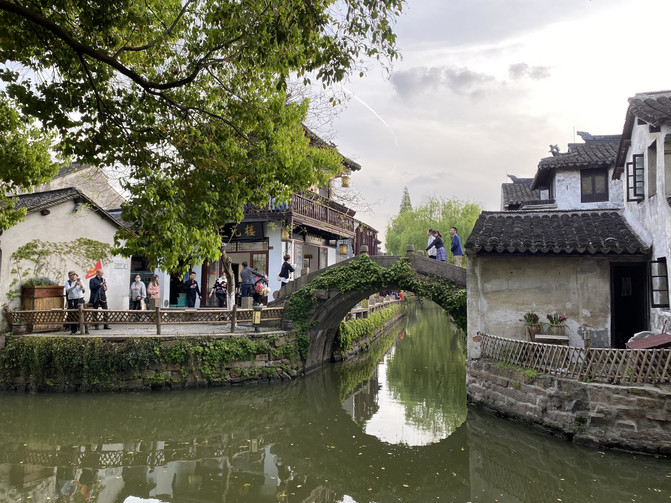

Tongxiu Bridge


Xianyuan Bridge



Tiyun Bridge

Jubao Bridge



Baoen Bridge


When the houses with white walls and gray tiles at the water's edge are reflected on the quiet river, the river surface is like a mirror, reflecting the tranquility and beauty of Zhouzhuang."The scenery is beautiful and people are swimming in paintings."





Zhouzhuang's charm lies not only in its charming water town scenery, but also in its rich history and culture. When you come to Zhouzhuang, you must visit Shenting and Zhangting. These two buildings demonstrate two completely different value orientations in Chinese culture. The masters of the two families also walked towards completely different destinies because they chose different paths.




Shenting is located on Nanshi Street on the south side of the east side of Fu 'an Bridge in Zhouzhuang. It faces south and has seven entrances to five gate towers. There are more than 100 houses of different sizes, distributed on both sides of the 100-meter-long central axis and covers an area of more than 2,000 square meters. It was a private house built by Shen Benren, a descendant of Shen Wansan, the richest man in Jiangnan, in the seventh year of Qianlong of the Qing Dynasty.




Shen Wansan, the "richest man in Jiangnan", once helped Zhu Yuanzhang build one-third of Nanjing's city wall. However, he offended the emperor by rewarding soldiers who were "rich enough to rival the enemy" and was sent to exile. During his exile, he did business again on the Tea Horse Ancient Road and regained his vitality. In 1392, he went to Fuquan Mountain to cultivate cultivation. Later, he died in Pingyue and was buried in Fuquan Mountain. Later generations moved him to Yinyinbang, Zhouzhuang, Jiangsu Province.
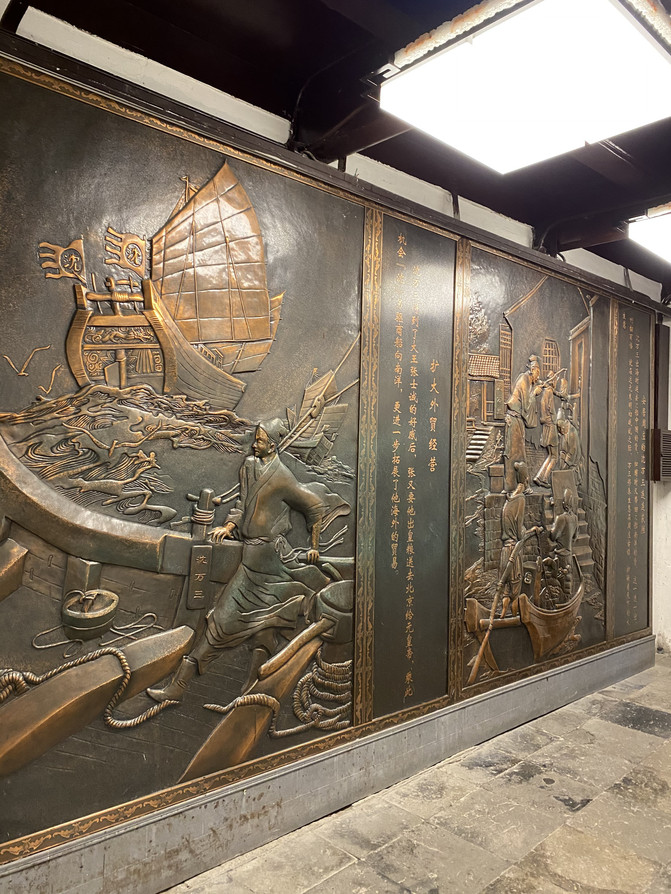

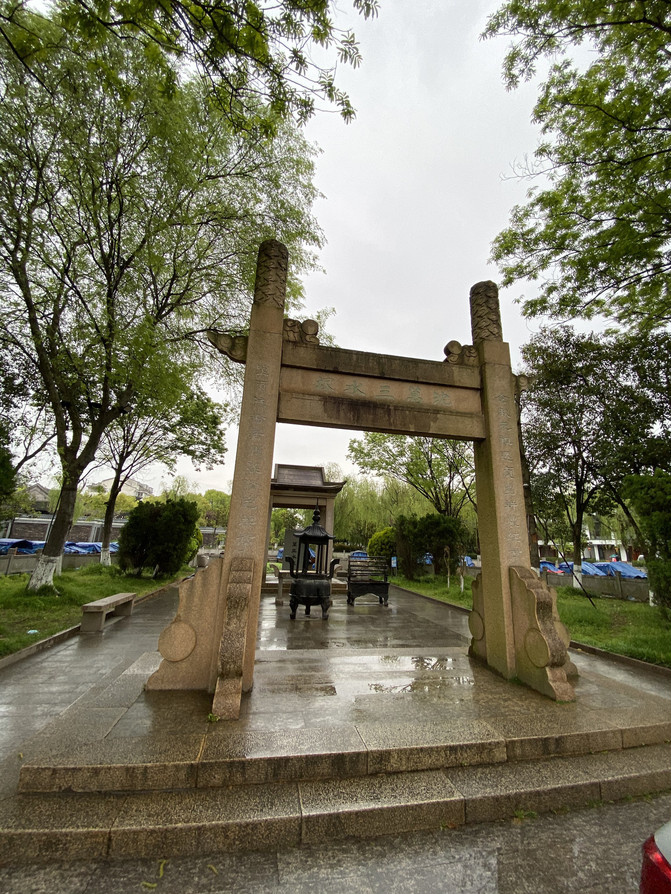
The Shen Hall consists of three parts. The front part is the water wall gate and Shihe Port, which is the dock for docking ships; the middle part is the wall gate, tea room, and main hall, which are the place for guests to discuss meetings and handle weddings and funerals; the rear part is the lobby building, small hall building, and back hall house, which are the living places.



The brick carving gatehouse of Chaozheng Hall is the most majestic of the five gatehouses. It is 6 meters high. It is covered with flying brick eaves on the top, with high horns, brick arches on the bottom, and lotus hanging columns on both sides. The five-story brick carvings are closely arranged. The central plaque is engraved with "Thick Flowing Light" and the surrounding is embossed with "Red Plum Blossom Welcoming the Spring". The carved characters, animals, pavilions, opera stories, etc. are lifelike and very vivid, comparable to the brick carving gatehouse in Suzhou Wangshi Garden.



In the hall, Songmao Hall is in the center, with high eaves and open, and the beams are engraved with python dragons, unicorns, flying cranes, and dancing styles. The plaque of Songmao Hall in the hall was written by Zhang Jian, the No. 1 scholar in Nantong.


The lobby building has a rich shape and smooth lines, and the carvings on the beams and buildings are all Ming-style circular patterns. The whole building combines the strengths of the Wei Gang, Shao Gang and Su Gang, and is magnificent.







Zoumalou is a kind of architectural form among Jiangnan residential buildings. The surrounding corridors can be passed through. Because the pavilions are connected, you can even walk through it without hindrance by riding horses, it is called Zoumalou.


The Zouma Building of Shenting is about 200 meters long and has 45 houses of different sizes. It is in six directions from the wall gate building to the Xiaotang Building, in a "back" pattern.






Zouma Building is the living place of the owner of the Shen family. It mainly includes the master's bedroom, the miss's bedroom, the master's bedroom, the master's bedroom, and the master's tent.







In ancient times, Miss Shen did not leave the door until she left the second door. Most of her daily life lived in the boudoir upstairs. She could not see guests casually. The windows on the walls were a good place to spy.


After walking around the Zouma Building, the air is filled with the breath that is still alive in the old times.



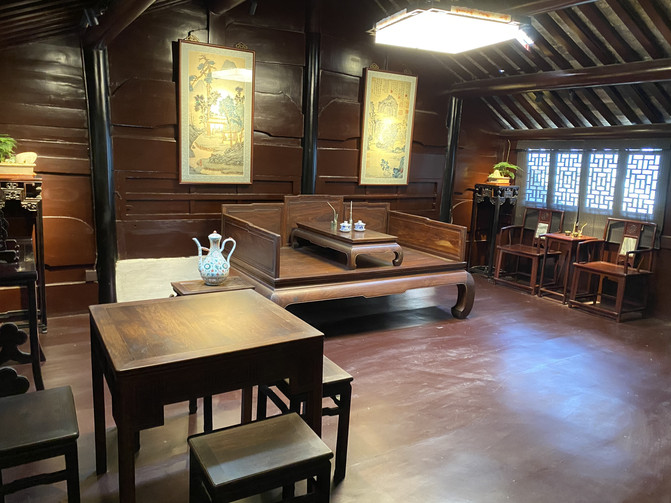




Zhang Ting, formerly known as Yishuntang, was built by the descendants of Xu Kui, the younger brother of Xu Da, the general of the Ming Dynasty, during the Zhengtong period of the Ming Dynasty. In the early Qing Dynasty, it was sold to a family surnamed Zhang and changed its name to Yuyantang, commonly known as Zhang Ting.

Although Zhang Hall is not as elegant as Shen Hall, the Jingjiang River runs through the house, forming a unique style of "the sedan chair enters through the front door and the boat passes through the home." This is also a foolproof plan for the official owner to avoid disaster.


Zhang Hall has seven entrances to the front and back, with more than 70 houses covering an area of more than 1800 square meters. As the residence of wealthy families, Zhang Hall has experienced more than 500 years of vicissitudes.
The carved beams and painted buildings are resplendent and magnificent, and the style remains the same.




The brick-carved gate building, solid stone pillars, and exquisite carvings have been damaged over the long years, it is still not difficult to see the style of Zhang Hall in the past.

The hall is grand and bright, and under the thick courtyards is the rare wooden drum pier (column foundation), which is a clear symbol of Ming Dynasty architecture. The hall is decorated with Ming-style mahogany furniture, decorated with lanterns and colorful colors to welcome and see off guests.
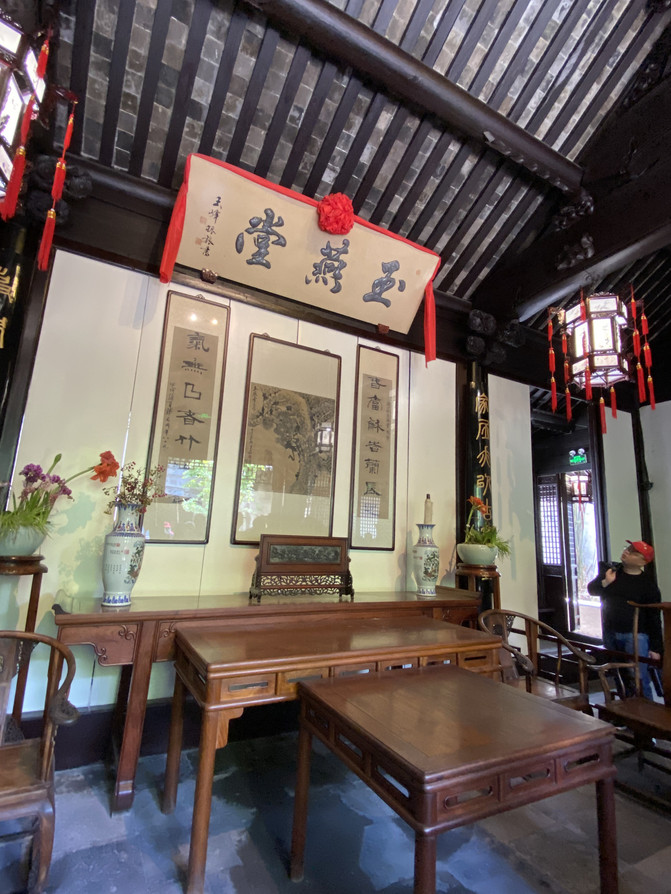







private school


The most spiritual place in Zhangting is in the back garden. Under the high wind and wall, green bamboos are swaying, roses are blooming, and books and grass are dotted with winding paths. A pillar of Taihu Lake stone is exquisitely clear, as white as snow, and at the peak there is a ridge shaped like a swallow swallow, so people call it Yuyan Peak. It adds a touch of elegance to this small garden.




Nanhu Qiuyue Garden is one of the eight major scenic spots in Zhouzhuang. Nanhu Lake, commonly known as Nanbaidang, has more than a thousand acres of water surface and the lake water is clear.












Although the Kunqu opera performed on the ancient stage, although I couldn't understand the lyrics, I felt enjoyable and even intoxicated.


The narrow streets and alleys, green waters, rippling songs, and hawking from hawkers are the integrated flavor of the water town.










In the water town at night, heavy makeup is first put on. As night falls, the lights are lit up one by one, and the simple and charming night view of the water town is beautifully presented.




















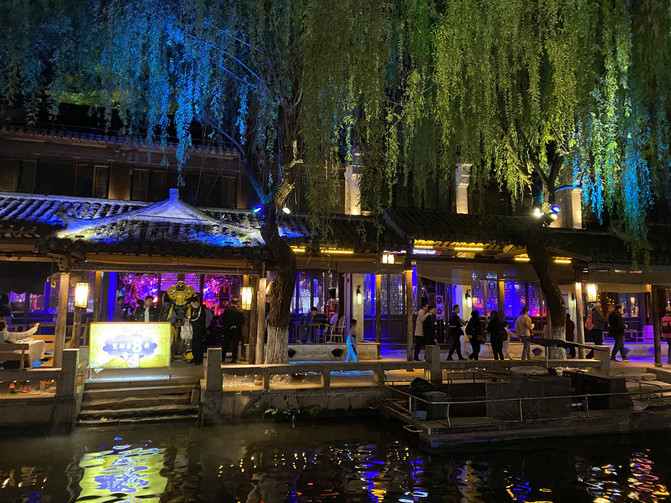




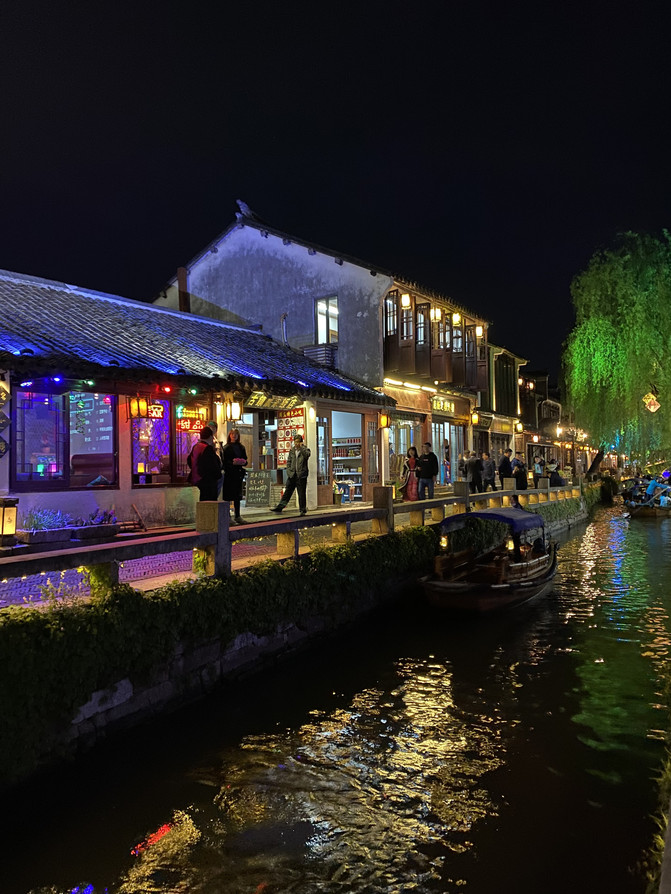








In the early morning, the misty rain fell, stained with a layer of ink and hazy, carrying dreams, charm, enthusiasm and rhythm. It seems to have an additional image of Zhouzhuang in my heart. It is such a quiet, elegant paradise that is not contaminated with the dust of the outside world.







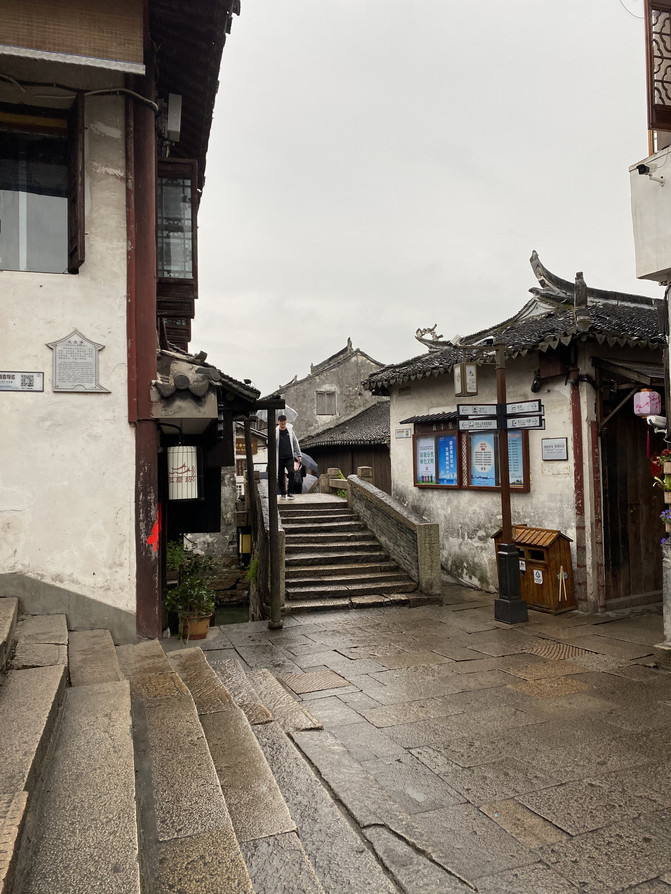



Previous Article:Summer travel to Suzhou, six new play experiences to satisfy anyone who is picky
Next Article:Drinking from the Ming Dynasty to the present, 31 thousand pots of wine are enough to comfort the world
